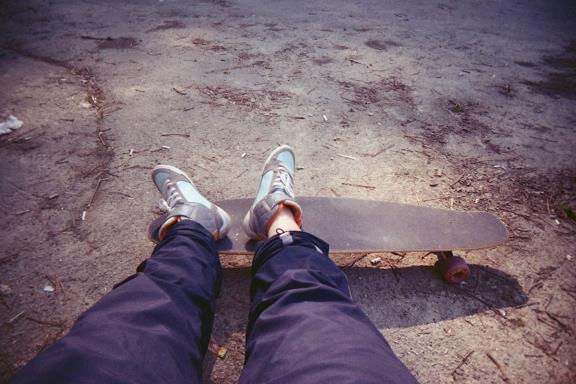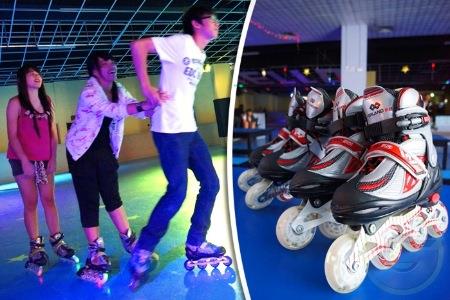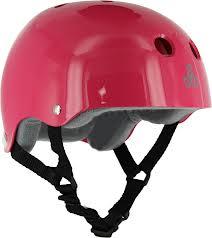Skateboarding and rollerblading is an increasingly popular recreational sports among teenagers especially males. It is a fun and challenging sports which requires skills and a low aerobic impact.
 |
 |
Practicing this sport safely by using proper safety equipment is most important. You can have fun but safety always comes first. This sport is a fast and high impact activity in which it may lead to various injuries. It may range from minor abrasions to a traumatic brain injury. Most cases that seek emergency attention are from head injury. The complications from this kind injury lead to a devastating medical attention and longer period of recovery. Injuries often involve wrist, ankle or face. This is due to loss of balance, fall off the skateboard or falling on an outstretched hand. Soft tissue injuries can range from minor abrasions to strains and sprains, fractures and dislocations. Wrist fractures are quite common and wearing a wrist guard can reduce this incidence. Facial injuries that is common such as nasal bone fracture and jaw dislocations. Severe injuries includes concussions, head injury and blunt head trauma. Most head injuries happen when the head hits the pavement. This sport is not suitable for children as it requires fast thinking and control skills that is beyond children’s capabilities. According to the American Academy of Pediatrics, children under age of 5 years should never ride one. While children between 6 to 10 years old needs supervision.
This sport is risky for young children because:
- Children will fall and hurt their head because of a higher center of gravity, poor balance and less development.
- Slower coordination and reaction times than adults.
- Less skill and ability to think. They are inexperienced in judging speed, traffic and other risks.
Serious injuries can occur when the skateboarder or rollerblader lose control and run into:
- Road hazard
- Motor vehicle
- Pedestrian
- Another skateboarder/rollerblader
- Bicyclist
Sixty percent of those involved in this sport involve children age 15 and below and most of them are males.
Those who are at highest risk:
- Inexperienced one will end up falling
- Those who don’t use protective gear such as helmet, wrist guards, elbow and knee pads and proper shoes
- Those who play near the traffic or using homemade ramps
- Those who tried risky stunts
- Those who play on wet pavements or uneven surfaces
You can prevent injuries by following these guidelines:
- Use a quality skateboard/rollerblade. Various characteristics for all types of riding including slalom, freestyle and speed.
- Keep them in proper order. You should inspect it before using. Get professional to repair if there is serious defect.
- Learn the basic skills of playing them. This includes how to brake properly, turning, slowing and fall safely.
- Wear proper protective gear including a properly fitting helmet, wrist guards, elbow and knee pad, and proper shoes.
Helmet
To protect from head injury, always wear a properly fitted helmet. This is especially true no matter your age, level of experience and skills. Do get a quality bicycle helmet or multi purpose helmet. It should meet national standard safety requirements. A properly fitting helmet:
- Sits low on your forehead
- Is worn flat on your head with the bottom edge parallel to the ground
- Has side strap that form a ‘V’ shape around each ear
- Has a buckle that fastens tightly.
- Has pads inside that you install or remove so that the helmet fits snuggly
- Does not move in any direction when you shake your head
- Does not interfere your vision or hearing
 |
| Helmet image from www.tactics.com |
Wrist guards help in supporting your wrist and preventing bone fracture when you fall. Knee and elbow pad helps you from getting severe cuts and scrapes. You should consider getting a closed and slip-resistant shoe. Goggles keep you from getting debris in the eyes. Never hold onto the side or rear of a moving vehicle while riding it. You could fall or be thrown into oncoming traffic. Never use your skateboard/rollerblade during wet weather. Avoid riding it in a huge crowd or darkness. Always inspect the area that you are going to play making sure the surfaces is even throughout. Be careful with tricks and jumps. Skill for this sport takes time to develop. Don’t do tricks that are beyond your experience and skills. If you are thinking of doing new tricks and jumps, please practice it in a controlled environment such as skate park and under supervision. Keeping yourself in good condition will help you from getting injured. Stretching and conditioning exercises will be enough before getting started. Do not use headphones while playing it. Please be considerate for other skateboarder/rollerblader especially those who are younger or less experience. Accidents do happen. Please know where to contact for first aider or emergency team in case there’s a serious injury occur.
References
- www.aap.org
- Clinical Sports Medicine, Peter Brukner and Karim Khan.
- www.nsc.org
| Last Reviewed | : | 22 January 2014 |
| Writer | : | Lt. Kol. Dr. Ridzuan b. Azmi |
| Accreditor | : | Prof. Madya Dr. Ahmad Tajuddin b. Othman |







